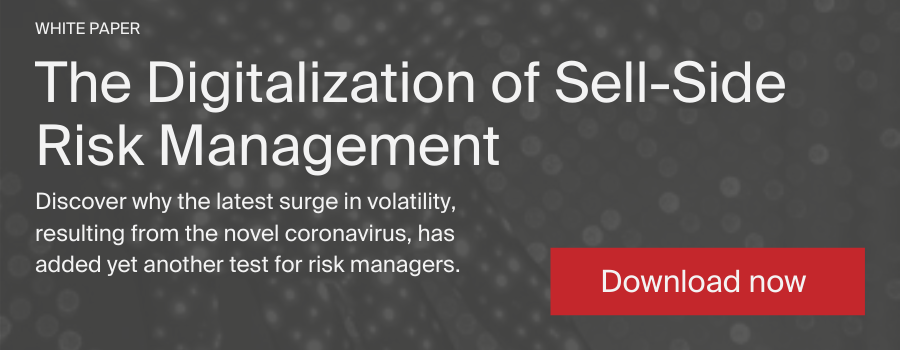
Exchange Traded Funds (ETFs) are proving to be one of the most successful financial innovations of the past few decades, overtaking mutual funds as ‘the’ instrument to invest in. But how much heed should we be paying to the adage ‘what goes up, must come down?’ And more importantly could the rise in ETFs’ popularity eventually lead to a form of systemic risk? Alan Kelly, Global Head of Risk Product at Torstone Technology outlines why firms need to understand exactly what they are investing in to avoid any long-term market damage, and how obtaining that insight isn’t the mammoth task risk managers might think it is.
Exploring ETFs
According to The Financial Times as of July 2021, ETF’s are heading for yet another record year, attracting $659bn of inflows in the first six months of 2021 compared with the record-breaking $767bn in 2020 as a whole. The reason for this boom has broadly been attributed to the simplicity, the cost-effective approach to investing, and the diversity they provide.
Obviously, it is great to have a success story amid so much other recent bad news, and long may the market enjoy the benefits of ETFs, but if history has taught us anything, it is that we must look closer if anything seems too good to be true.
Because even though ETFs are tied to exchanges, which provide a certain level of confidence for investors, they also have the potential to carry substantial risk. This is due to their opaque nature. ETFs can contain derivatives as underlyings (so called leveraged ETFs) and so can have gearing which amplifies market movements. They can also contain short exposure (so they are betting on a fall in the market) as well as long exposure.
Put simply, by only checking the end of day price of the ETF and not fully understanding the risk exposure of its underlyings, investors can unwittingly quickly lose vast sums of money if markets move in a particular way. So, what do the regulators make of this?
Are regulators helping or hindering?
With such potential risk at play, surely the regulator is on standby, ready to spring into action and issue some regulation to curb the market enthusiasm? Well, not really. In fact, the Securities and Exchange Commission (SEC) issued a new rule – aka the ‘ETF rule’ – in September 2019 that removed ‘exemptive relief’ regulations, enabling ETF issuers to bring new strategies to market more easily.
The other side of the pond seems to be thinking more cautiously about the hybrid investment vehicles, because the same year the SEC passed the ETF rule, the ESRB published a paper ‘Can ETFs contribute to systemic risk?’ which asserts that ETFs may raise systemic risk through four main channels:
- Higher volatility and co-movement of security prices, especially at times of market stress and if the constituent securities are illiquid;
- Decoupling of ETF prices from those of constituent securities at times of stress, with destabilising effects on financial institutions heavily exposed to ETFs or reliant on them for liquidity management;
- Inducement of investors to take large, correlated exposures, which may result in contagion in the event of sharp ETF price drops;
- Materialisation of operational risks in a major provider of ETFs, which may generate widespread sales of ETFs owing to the sector’s very high level of concentration.
These hypotheses are bound to give any would-be investor significant food for thought. Additionally, we have seen ETFs blamed for real-world stock market flash crashes and some ETFs have caused momentary market panics in recent times. When taking all of this into consideration, it is hard to view ETFs with the same level of optimism.
But it is important to remember, while ETFs were involved in these disruptions, they didn't cause them. It is not the instrument itself that is at fault. It is how they are managed.
Stay ahead of the game
Firms who want the rewards of ETFs with the least amount of risk exposure possible can’t wait for regulators to issue rules or wait for the first huge company or sector to take a hit. Just think, if Tesla were to fold tomorrow, the knock-on effect would be gargantuan for the many fund managers who have direct positions in the tech giant, as well as indirect exposure across many ETF positions. Put bluntly, the scenario of Tesla folding is only one failed mission to the moon away for Mr. Musk, as in his own words the company will “likely die without him as CEO”.
Most vendors are only just starting to offer the tools needed to get the requisite underlying breakdown data – constituents and their weightings in the ETF, required to calculate the underlying risk exposures – so many institutions are effectively trading blind from a risk management perspective. With this in hand, it’s possible to know the total effective exposure to a company in aggregate.
We believe it is always better to know exactly what you’re dealing with and so have made this area a priority in the risk management part of our business. So much so that we are currently working with firms right now to get this insight by breaking out the constituents of their ETFs and consolidating their risk exposures by underlying security risk. If you want to find out how we can help you get a more complete picture, contact us today.
.jpg)




